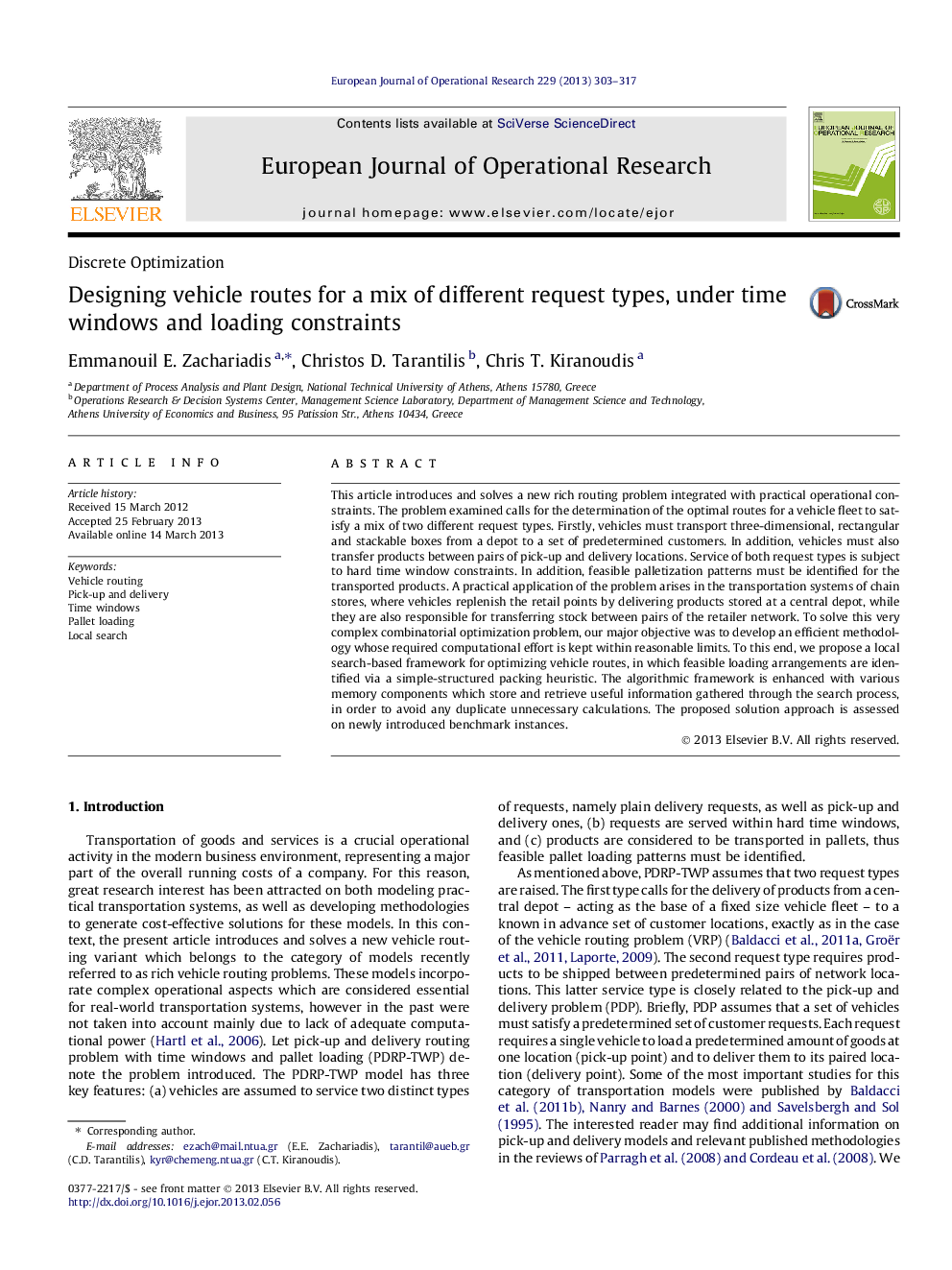| Article ID | Journal | Published Year | Pages | File Type |
|---|---|---|---|---|
| 476717 | European Journal of Operational Research | 2013 | 15 Pages |
•New vehicle routing model with operational constraints.•Routes satisfy a blend of plain delivery and pick-up and delivery requests.•Feasible pallet packing patterns must be identified for the transported goods.•Local-search framework equipped with appropriate memory components.•Results are reported on new benchmark instances, derived from well-known routing problems.
This article introduces and solves a new rich routing problem integrated with practical operational constraints. The problem examined calls for the determination of the optimal routes for a vehicle fleet to satisfy a mix of two different request types. Firstly, vehicles must transport three-dimensional, rectangular and stackable boxes from a depot to a set of predetermined customers. In addition, vehicles must also transfer products between pairs of pick-up and delivery locations. Service of both request types is subject to hard time window constraints. In addition, feasible palletization patterns must be identified for the transported products. A practical application of the problem arises in the transportation systems of chain stores, where vehicles replenish the retail points by delivering products stored at a central depot, while they are also responsible for transferring stock between pairs of the retailer network. To solve this very complex combinatorial optimization problem, our major objective was to develop an efficient methodology whose required computational effort is kept within reasonable limits. To this end, we propose a local search-based framework for optimizing vehicle routes, in which feasible loading arrangements are identified via a simple-structured packing heuristic. The algorithmic framework is enhanced with various memory components which store and retrieve useful information gathered through the search process, in order to avoid any duplicate unnecessary calculations. The proposed solution approach is assessed on newly introduced benchmark instances.
